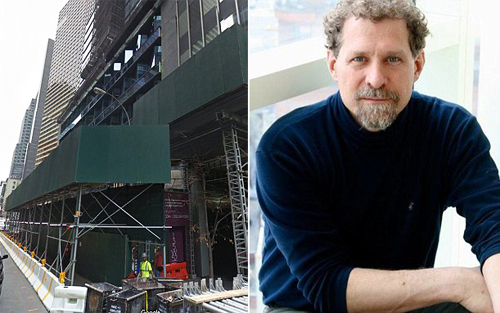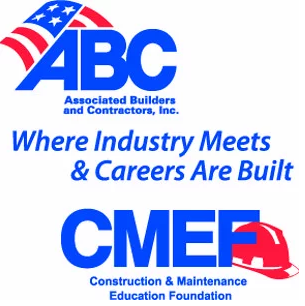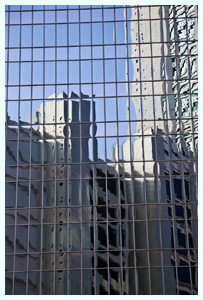Safety Applies to Everyone on the Jobsite, Even the Architects
 Professors try their best to convince their architectural students that they “rule the world and the jobsite.” Many of them grow to believe that myth and some of them live that way. Few are well-versed on jobsite safety. Even if they are among the few who receive training, occasionally the most safety-conscious architect makes a simple mistake and pays for it with his or her life.
Professors try their best to convince their architectural students that they “rule the world and the jobsite.” Many of them grow to believe that myth and some of them live that way. Few are well-versed on jobsite safety. Even if they are among the few who receive training, occasionally the most safety-conscious architect makes a simple mistake and pays for it with his or her life.
According to reports, Bruno Travalja, architect and owner of Crowne Architectural Systems in New Jersey, was doing an inspection and some last minute measurements on the 42nd floor of a mid-rise tower in New York City when he fell to his death in a tragic accident. [node:read-more:link]

 Safety is paramount in construction. It must be top of mind at all times. The construction industry has taken great steps to create safe worksites and it is paying off. As Construction Citizen
Safety is paramount in construction. It must be top of mind at all times. The construction industry has taken great steps to create safe worksites and it is paying off. As Construction Citizen 

 Safety is all around us, and it is not just something you practice at work. There are hazards all around us. From everyday tasks, such as plugging in your devices into the outlet, to toys or clothes on the floor. Safety should be something we practice every day. It should be a part of our culture. Cutting corners can lead to catastrophic consequences and can ruin someone’s life in an industrial or construction setting. It can also cost your company a ton of money, not to mention having your reputation tarnished.
Safety is all around us, and it is not just something you practice at work. There are hazards all around us. From everyday tasks, such as plugging in your devices into the outlet, to toys or clothes on the floor. Safety should be something we practice every day. It should be a part of our culture. Cutting corners can lead to catastrophic consequences and can ruin someone’s life in an industrial or construction setting. It can also cost your company a ton of money, not to mention having your reputation tarnished. 
 “Congratulations, you have been selected to be a part of the team! Your starting date will be….”
“Congratulations, you have been selected to be a part of the team! Your starting date will be….” 



 Associated Builders & Contractors (ABC) of Greater Houston and Construction and Maintenance Education Foundation (CMEF) are offering safety courses in the coming months. ABC is a national trade association representing 22,000 members from more than 19,000 construction and industry-related firms. ABC Greater Houston helps members win construction related work and deliver that work safely, ethically, and profitably for the betterment of the communities in which they work. CMEF, ABC’s educational affiliate, is a non-profit 501 (c3) solely devoted to servicing the workforce development needs of the contractor community through programs ranging from craft and safety training to management and leadership instruction. CMEF is accredited by the NCCER, and all of our courses are taught using the nationally standardized NCCER curriculum. Visit their websites at www.abchouston.org or www.cmefhouston.org. You can also give them a call, ABC – 713-523-6222; CMEF – 281-478-3900.
Associated Builders & Contractors (ABC) of Greater Houston and Construction and Maintenance Education Foundation (CMEF) are offering safety courses in the coming months. ABC is a national trade association representing 22,000 members from more than 19,000 construction and industry-related firms. ABC Greater Houston helps members win construction related work and deliver that work safely, ethically, and profitably for the betterment of the communities in which they work. CMEF, ABC’s educational affiliate, is a non-profit 501 (c3) solely devoted to servicing the workforce development needs of the contractor community through programs ranging from craft and safety training to management and leadership instruction. CMEF is accredited by the NCCER, and all of our courses are taught using the nationally standardized NCCER curriculum. Visit their websites at www.abchouston.org or www.cmefhouston.org. You can also give them a call, ABC – 713-523-6222; CMEF – 281-478-3900. 
 As Industrial Hygiene and Safety Professionals, we introduced the idea of
As Industrial Hygiene and Safety Professionals, we introduced the idea of  The president of FIFA, Sepp Blatter, resigned today after being re-elected in the midst of an unprecedented scandal over the awarding of the 2022 World Cup to Qatar.
The president of FIFA, Sepp Blatter, resigned today after being re-elected in the midst of an unprecedented scandal over the awarding of the 2022 World Cup to Qatar. As Safety Professionals, we are dedicated to the protection of people, property and the environment. Our success is often measured in the amount of human suffering we prevent as we chart OSHA rates for recordable injuries, lost work day cases or cases of restricted work activity. We attempt to quantify our success as we compare past results against current performance. If the needle trends downward, we pat ourselves on the back, notify management and tout the success of our safety efforts. We become singular in focus as if the success or failure of our organization is predicated on this sole outcome. This type of thinking causes us to be pigeon holed in our world, many times, outside of the heartbeat of the organization and its leadership. We are brought into the Board room to report on a certain situation and promptly escorted out once our information and expertise is no longer needed. It is a sad reality that this is how a large majority of safety professionals operate. If this is how you operate, the question becomes, “why should I change and if I do, how do I change?”
As Safety Professionals, we are dedicated to the protection of people, property and the environment. Our success is often measured in the amount of human suffering we prevent as we chart OSHA rates for recordable injuries, lost work day cases or cases of restricted work activity. We attempt to quantify our success as we compare past results against current performance. If the needle trends downward, we pat ourselves on the back, notify management and tout the success of our safety efforts. We become singular in focus as if the success or failure of our organization is predicated on this sole outcome. This type of thinking causes us to be pigeon holed in our world, many times, outside of the heartbeat of the organization and its leadership. We are brought into the Board room to report on a certain situation and promptly escorted out once our information and expertise is no longer needed. It is a sad reality that this is how a large majority of safety professionals operate. If this is how you operate, the question becomes, “why should I change and if I do, how do I change?”